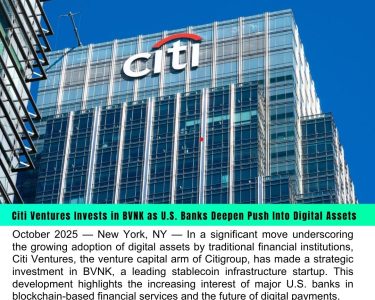In a bold move signaling the growing convergence of traditional finance and blockchain technology, South Korea’s largest bank, KB Kookmin, has officially filed trademark applications related to stablecoins. The filings include names such as KBKRW and KRWST, pointing to the bank’s intent to develop and manage cryptocurrency products tied to the South Korean won (KRW).
This development is a significant milestone for the crypto landscape in South Korea, a country known for its tech-savvy population and robust digital innovation. By filing trademarks that hint at stablecoin offerings, KB Kookmin is positioning itself at the forefront of crypto adoption in the traditional banking sector.
What Are KBKRW and KRWST?
According to the trademark filings, KBKRW and KRWST appear to represent digital tokens pegged to the Korean won. “KRW” is the ISO currency code for the South Korean won, while the suffixes “KRW” and “ST” likely stand for “Kookmin Won” and “Stable Token” respectively. These stablecoins would presumably be designed to maintain a 1:1 peg to the national currency, making them a trusted medium for digital payments and settlements.
Stablecoins are digital currencies backed by fiat money, commodities, or algorithms, and they play a critical role in the crypto ecosystem by offering the stability of traditional currencies with the innovation and flexibility of blockchain.
Why Is This a Big Deal?
The entry of a major bank like KB Kookmin into the stablecoin space reflects increasing institutional interest in blockchain-based finance. If launched, KBKRW and KRWST would likely be regulated digital assets designed to meet compliance and security standards. This could pave the way for mainstream adoption of stablecoins in South Korea and offer an alternative to volatile cryptocurrencies like Bitcoin or Ethereum.
Moreover, this move could enhance financial inclusion, streamline cross-border payments, and reduce transaction costs. For businesses and consumers alike, a bank-backed stablecoin could mean faster and safer financial transactions without relying on intermediaries.
A Growing Trend in Asia
KB Kookmin’s initiative is part of a larger trend in Asia, where several financial institutions and governments are exploring digital currencies. South Korea’s central bank has already been testing its own CBDC (Central Bank Digital Currency), and private sector involvement could accelerate ecosystem development. Similar moves are being observed in Japan, China, and Singapore, where digital finance is becoming a key strategic focus.
What’s Next?
While trademark filings don’t guarantee product launches, they signal strategic intent. If KB Kookmin proceeds with developing KBKRW or KRWST, it could open new opportunities for integration between banks, crypto exchanges, fintechs, and consumers.
Investors and blockchain enthusiasts should keep a close watch, as regulatory clarity and market demand will play crucial roles in shaping the future of these digital tokens.
Conclusion
KB Kookmin Bank’s trademark filings for stablecoins like KBKRW and KRWST mark a significant step forward in merging traditional banking with the digital asset world. As South Korea continues to lead in financial technology innovation, this move could reshape how digital currencies are adopted, regulated, and used in everyday life.





